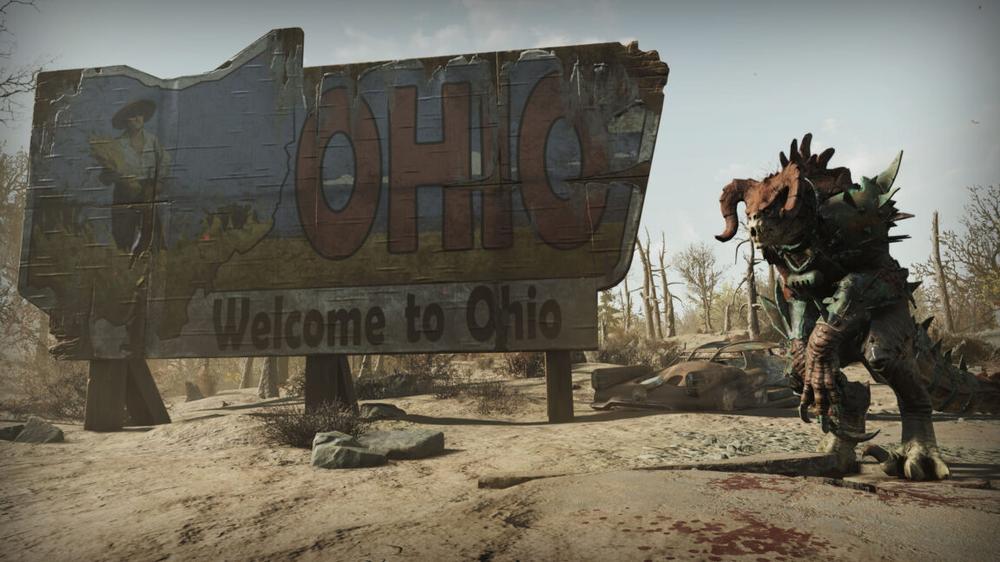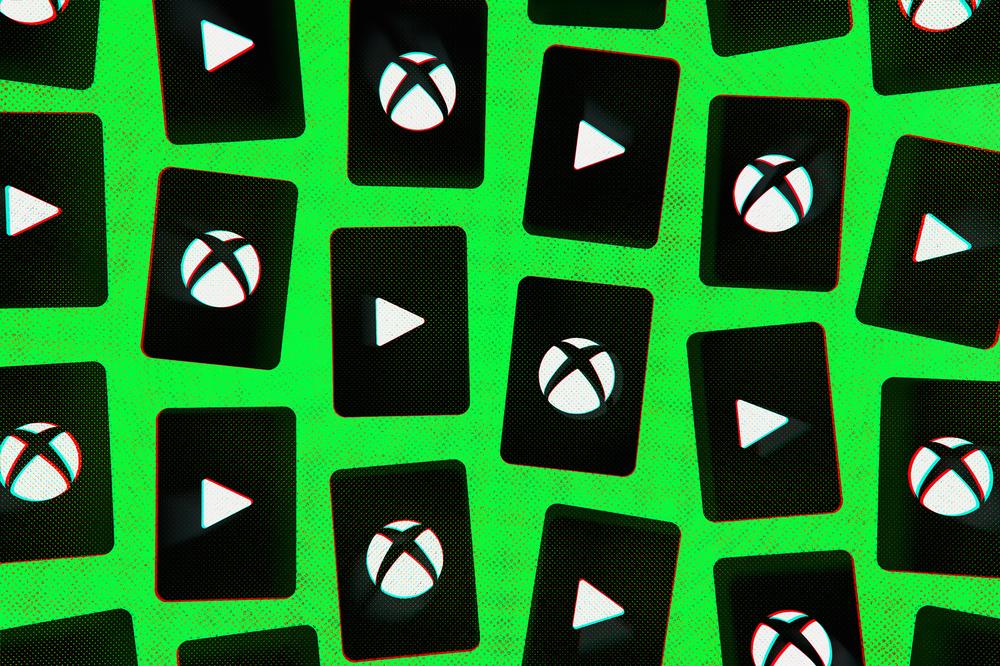Bethesda provided flights from Chicago to New York City so that Ars could participate in the preview opportunity for Fallout 76: Burning Springs. Ars does not accept paid editorial content.
Like anybody, I have a few controversial gaming opinions and tastes. One of the most controversial is that Fallout 76 —the multiplayer take on Bethesda's rethink of a beloved '90s open-world computer roleplaying game—has been my favorite online multiplayer game since its launch.
As much as I like the game, though, I've been surprised that it has actually grown over the past seven years. I'm not saying it's seen a full, No Man's Sky-like redemption story, though. It's still not for everyone, and in some ways, it's fallen behind the times since 2018.
Nevertheless, the success of the streaming TV show based on the game franchise has attracted new players and given the developers a chance to seize the moment and attempt to complete a partial redemption story. To help make that happen, the game's developers will soon release an expansion fully capitalizing on that TV series for the first time, and I got to spend a few hours playing that update to see if it's any fun.
That said, don't get distracted by the shiny TV tie-in. The important work is a lot less flashy: combat overhauls, bug fixes, balance updates, quality of life improvements, and technological tweaks—all of which have been added to the game over time. Ultimately, that little stuff adds up to be more impactful than the big stuff for players.
With that in mind, let's take a quick look at where things stand based on my seven years of regularly playing the game and a few hours with the next major expansion.
Months of combat and game balance overhauls
You probably already know that the game originally launched without NPCs or the kinds of story- and character-driven quests most people expect from Fallout and that those things were added to the game in 2020, with more similar additions in the years since.
You could make a case that the original, NPC-free vision made sense for a certain kind of player, but that's not the kind of player who tends to like Fallout games. Bethesda clearly pictured a Rust-like, emergent social PvP (player vs. player) situation when the game first came out. By now, though, PvP is almost completely absent from the game, and story-based quests loaded with NPCs are plentiful.
It still wasn't enough for some players. There were several small frustrations about gameplay balance, as some folks felt that combat wasn't always as fun as it could be and that the viable character builds in the endgame were too narrow.
Through a series of many patches over just this past year, Bethesda has been making significant changes to that aspect of the game. Go to Reddit and you'll see that some players have gripes—mainly because the changes nerfed some uber-powerful endgame builds and weapons to level the playing field. (Also, some recent changes to VATS are admittedly a double-edged sword, depending on your philosophy about what role it should play in the game.)
As someone who has been playing almost nonstop this whole time, though, I think the designers have done a great job of making more playstyles viable while just generally making the game feel better to play. They also totally overhauled how the base-building system works. That's the sort of stuff that is hard to convey in a marketing blitz, but you feel it when you're playing.
I won't get into every detail about it here since most people reading this probably haven't played the game enough to warrant that, but you can look at the patch notes—it's a lot.
But I want to point that out up front because I think it's more important than anything in the actual expansion the developer and publisher are hyping up. The game is just generally more fun to play than it used to be—even a year ago. You love to see it.
Technically, it’s a mixed bag
Earlier, I mentioned that the game has fallen behind the times in many ways. I'm mostly talking about its technical presentation and the lack of modern features players now expect from big-budget, cross-platform multiplayer games.
The assets are great, the art direction is top-notch, and the world is dense and attractive, but there are some now-standard AAA boxes it doesn't check. A full redemption story requires addressing at least some of these things to keep the game up to modern standards.
First up, the game has no executable for modern consoles; the Xbox Series X|S and PlayStation 5/5 Pro consoles seem to run the last-gen Xbox One X and PlayStation 4 Pro versions, respectively, just with the framerate cap (thankfully) raised from 30 fps to 60 fps.
But there's good news on that front: I spoke with development team members who confirmed that current-gen console versions are coming soon, though they didn't specify what kinds of upgrades we can expect.
I hope that also means a rethought approach to how the game displays on HDR (high dynamic range) TVs. To this day, HDR does not work like you'd expect; the game looks washed out on an OLED TV in particular, and there are none of the industry-standard HDR calibration sliders to fix it. HDR also didn't work properly in Starfield at launch (it got partially addressed about a year later) and it is completely absent from the otherwise gorgeous-to-behold The Elder Scrolls IV: Oblivion remaster that came out just this year. I don't know what the deal is with Bethesda Game Studios and HDR but I hope they figure it out by the time The Elder Scrolls VI hits.
I also asked the Fallout 76 team about cross-play and cross-progression—the ability to play with friends on different platforms (or to at least access the same character across platforms). These features are likely nontrivial to implement, and they weren't standard in 2018. They're increasingly expected for big-budget, AAA multiplayer games today, though.
Unfortunately, the Bethesda devs I spoke didn't have any plans to share on that front. Still, it's good to hear that the company still supports this game enough to at least launch modern console versions—and to continue adding major content updates.
OK, we can talk about the TV show update now
Speaking of major content updates, Bethesda is planning a big release called Burning Springs this December. It marks the second significant map expansion. Whereas the first expanded from the game's West Virginia locales southward into Virginia's Shenandoah National Park, this one pushes the map further west, into the state of Ohio.
Ohio is a dust bowl now, it seems, so Fallout 76 will see its first desert locale. That's an intentional choice, as the launch of this expansion will be timed closely to the release of season two of the TV show, and the show will be set in Nevada (specifically, around New Vegas). It obviously wouldn't make sense to expand the game's map all the way out to the western US, so this gives the developers a way to add a little season two flavor to Fallout 76.
As I was leaving my home to go to Bethesda's gameplay preview event for Burning Springs, my wife joked that they should add Walton Goggins to the game as the ultimate tie-in with the show. Funny enough, that's exactly what they've done. Goggins' character from the show, The Ghoul, can be found in the new Burning Springs region, and he voices the character. This game is a prequel to the show by many, many years, but fortunately, Ghouls don't age.
The Ghoul will give players repeatable bounty hunter missions of two types—one that you can handle solo and one that's meant to be done as a public event with other players.
I got to try both, and I found they were pretty fun, even though they don't go too far in breaking the mold of Fallout 76's existing public events.
I also spent more than two hours freely exploring the game's post-apocalyptic interpretation of Ohio. Despite the new desert aesthetic, it's all pretty familiar Fallout stuff: raider-infested Super Duper Marts, blown-out neighborhoods, and the like. There is a very large new settlement that has a distinct character compared to the game's existing towns, and it's loaded with NPCs. I also enjoyed a public event that has players battling through a junkyard with a cyborg Deathclaw at their side—yep, you read that right.
I'm told there will be a new story quest line attached to the new region that involves a highly intelligent Super Mutant named the Rust King. I didn't get to do those quests during this demo, though.
Burning Springs doesn't do anything to rethink Fallout 76's basic experience; it's just more of it, with a different flavor. But since Bethesda has done so much work making that basic experience more fun, that's OK. It means more Fallout 76 is, in fact, more of a good thing.
TV tie-ins don't fix a broken game, but they bring new or lapsed players back to a broken game that has since been fixed.
If you don't like looter shooters, survival crafting games, or the very idea of multiplayer games—and some Fallout players just don't—it's not going to change your mind. But if the reason you skipped this game or bounced off of it was that you liked what it was going for, but felt it stumbled on the execution, it can't hurt to give it another try with the new update.
I don't think that's such a controversial opinion anymore. As a longtime player, it's nice to be able to say that.

 Xbox Cloud Gaming comes out of beta with improved 1440p resolution
Xbox Cloud Gaming comes out of beta with improved 1440p resolution